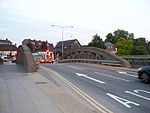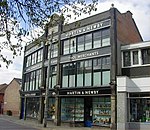St Mary-at-the-Quay Church, Ipswich
Church of England church buildings in IpswichChurches preserved by the Churches Conservation TrustEnglish Gothic architecture in SuffolkFormer Church of England church buildingsGrade II* listed churches in Suffolk

St Mary-at-the-Quay Church is a former Anglican church in Ipswich, Suffolk, England. The medieval building is under the care of the Churches Conservation Trust. and since September 2021 it has been used by River Church to implement an approach to evangelicism developed by Holy Trinity Brompton as part of the network of HTB church plants. The church originally served the thriving industry around the docks area of the town and those that worked there. After closing for regular worship in the 1950s the church was transferred to the CCT in 1973 and underwent a major restoration programme completing in 2016.
Excerpt from the Wikipedia article St Mary-at-the-Quay Church, Ipswich (License: CC BY-SA 3.0, Authors, Images).St Mary-at-the-Quay Church, Ipswich
Foundation Street,
Geographical coordinates (GPS) Address Website External links Nearby Places Show on map
Geographical coordinates (GPS)
| Latitude | Longitude |
|---|---|
| N 52.0529 ° | E 1.1564 ° |
Address
Saint Mary at the Quay
Foundation Street
IP4 1FW , Stoke
England, United Kingdom
Open on Google Maps








